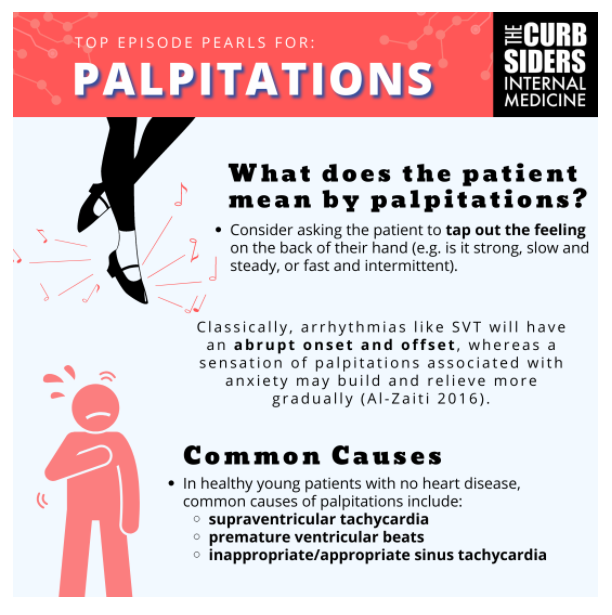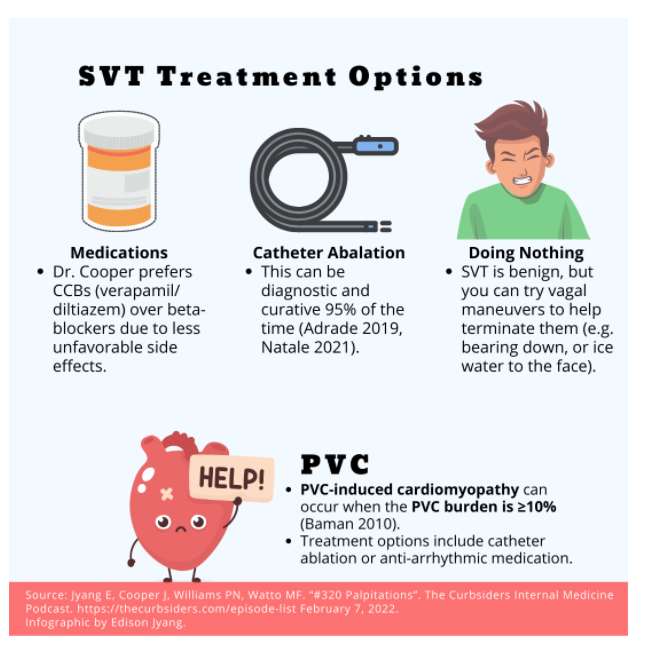What follows are two thoughts of Dr. Cooper’s from the podcast.
The most common reason for an implantable heart rhythm monitor is for stroke of unkown etiology (looking for atrial fibrillation). The implantable monitor might also be an excellent option in the patient with transient ischemic attack of unknown etiology if a two-week wearable monitor does not detect an etiology.
A wearable monitor for two weeks will capture most of the important arrhythmias. If it doesn’t that might be an indication with an implantable long term heart rhythm monitor. The implantation procedure is percutaneous and subq taking less than a minute.
In addition to the resource reviewed today, please review the following:
- Links To And Excerpts From “Catecholaminergic Polymorphic Ventricular Tachycardia” From Gene Reviews
Posted on March 19, 2022 by Tom Wade MD - Links To And Excerpts From Of The Article “The Athlete With Catecholaminergic Polymorphic Ventricular Tachycardia”
Posted on March 18, 2022 by Tom Wade MD - Links To And Excerpts From Sudden Death in the Young: Information for the Primary Care Provider-FROM THE AMERICAN ACADEMY OF PEDIATRICS| POLICY STATEMENT
Posted on March 18, 2022 by Tom Wade MD
In this post, I link to and excerpt from The Curbsiders‘ #320 Palpitations with Dr. Joshua Cooper
FEBRUARY 7, 2022 By DR PAUL WILLIAMS.*
*Jyang E, Cooper J, Williams PN, Watto MF. “#320 Palpitations”. The Curbsiders Internal Medicine Podcast. https://thecurbsiders.com/episode-list February 7, 2022.
All that follows is from the above outstanding podcast and show notes.
Holt onto your cards!
When should you fold or Holt onto your cards for palpitations? Learn about properly characterizing a patient’s palpitations, red flag symptoms, when to grab an echocardiogram and/or heart monitoring, and when certain “benign” ECG findings can be concerning. We’re joined by the director of cardiac electrophysiology at Temple University Hospital, Dr. Joshua Cooper (@narrowQRS) for this episode chock full of cardiac pearls to make your heart skip a beat.
Credits
- Producer, Show Notes, Infographic, and Cover Art: Edison Jyang
- Producer: Paul Williams MD, FACP
- Hosts: Matthew Watto MD, FACP; Paul Williams MD, FACP
- Reviewer: Molly Heublein MD
- Executive Producer: Beth Garbitelli
- Showrunner: Matthew Watto MD, FACP
- Editor: Clair Morgan of nodderly.com
- Guest: Joshua Cooper MD
_____________________________________________________________
I’ve included the links to the sponsors of this episode because the sponsors help keep this awesome medical education site free and open source. I have no relationship, financial or otherwise, with The Curbsiders’ or with the sponsors.
Sponsor: BetterHelp
Special offer for The Curbsiders listeners: get 10% off your first month at betterhelp.com/Curb
Sponsor: Panacea Financial
Visit panaceafinancial.com today for information on their student loan refinance loans and to learn about their “refer a friend” program.
Sponsor: Imperfect Foods
Right now, Imperfect Foods is offering our listeners 20% off your first 4 orders when you go to https://www.imperfectfoods.com and use promo code CURB.
Sponsor: Indeed
Go to Indeed.com/INTERNALMEDICINE to claim your $75 CREDIT before March 31st.
________________________________________________________
Red Flag Symptoms
Chest pain, lightheadedness, severe bradycardia and loss of consciousness, are all red flag symptoms (Abbott 2005)
- Chest pain could be an indicator of underlying congenital or acquired heart disease.
- Lightheadedness and a loss of consciousness could indicate a severe enough tachycardia to decrease brain blood flow (e.g. ventricular tachycardia/fibrillation, or atrial fibrillation with Wolff-Parkinson-White syndrome).
- Severe bradycardia could be an indicator of heart block.
To echo, or not to echo?
Dr. Cooper takes into account the frequency of symptoms when he decides whether to order an echocardiogram.
Really, it seems to me, everybody with palpitations should usually have an echocardiogram looking for structural heart disease. Dr. Cooper reminds us that Cardiac MR* can provide much more structural detail of the heart than an echo. So he sometimes takes that next step.
*Cardiac MRI
From Radiopaedia. Last revised by Dr Bassem Marghany on 10 Feb 2022
Monitors
There are 3 main options for monitors to choose from:
- Holter Monitor (24-48 hours)
- 5 Day – Several Week Continuous or Event Monitor
- Implantable Monitor (3-4 years)
Dr. Cooper bases his decision on the frequency and severity of symptoms. Symptoms that occur every other day can likely be caught by a Holter monitor. For most cases, 2 week monitoring is a good balance between length of monitoring and likelihood of catching symptoms. Implantable monitors are important for severe symptoms (e.g. syncope) that occur infrequently.
Dr. Cooper states that the most common indication for an implantable monitor is stroke of undetermined etiology.
Red Flag Symptoms
Chest pain, lightheadedness, severe bradycardia and loss of consciousness, are all red flag symptoms (Abbott 2005)
- Chest pain could be an indicator of underlying congenital or acquired heart disease.
- Lightheadedness and a loss of consciousness could indicate a severe enough tachycardia to decrease brain blood flow (e.g. ventricular tachycardia/fibrillation, or atrial fibrillation with Wolff-Parkinson-White syndrome).
- Severe bradycardia could be an indicator of heart block.
Remember to take a careful family history of death at a young age. Ask about deaths from auto accident or drowning as these could be caused by an arrythmia.
Dr. Cooper’s Take Home Points
- Understand clearly what the patient means by palpitations.
- Understand the different options for monitors.
- Understand that there are treatments for most patient symptoms.
- Understand red flag symptoms (e.g. syncope, presyncope, dyspnea).
- Correlate symptoms with other medical conditions.
- Electrophysiologists are eager to help, even in an informal consult.







